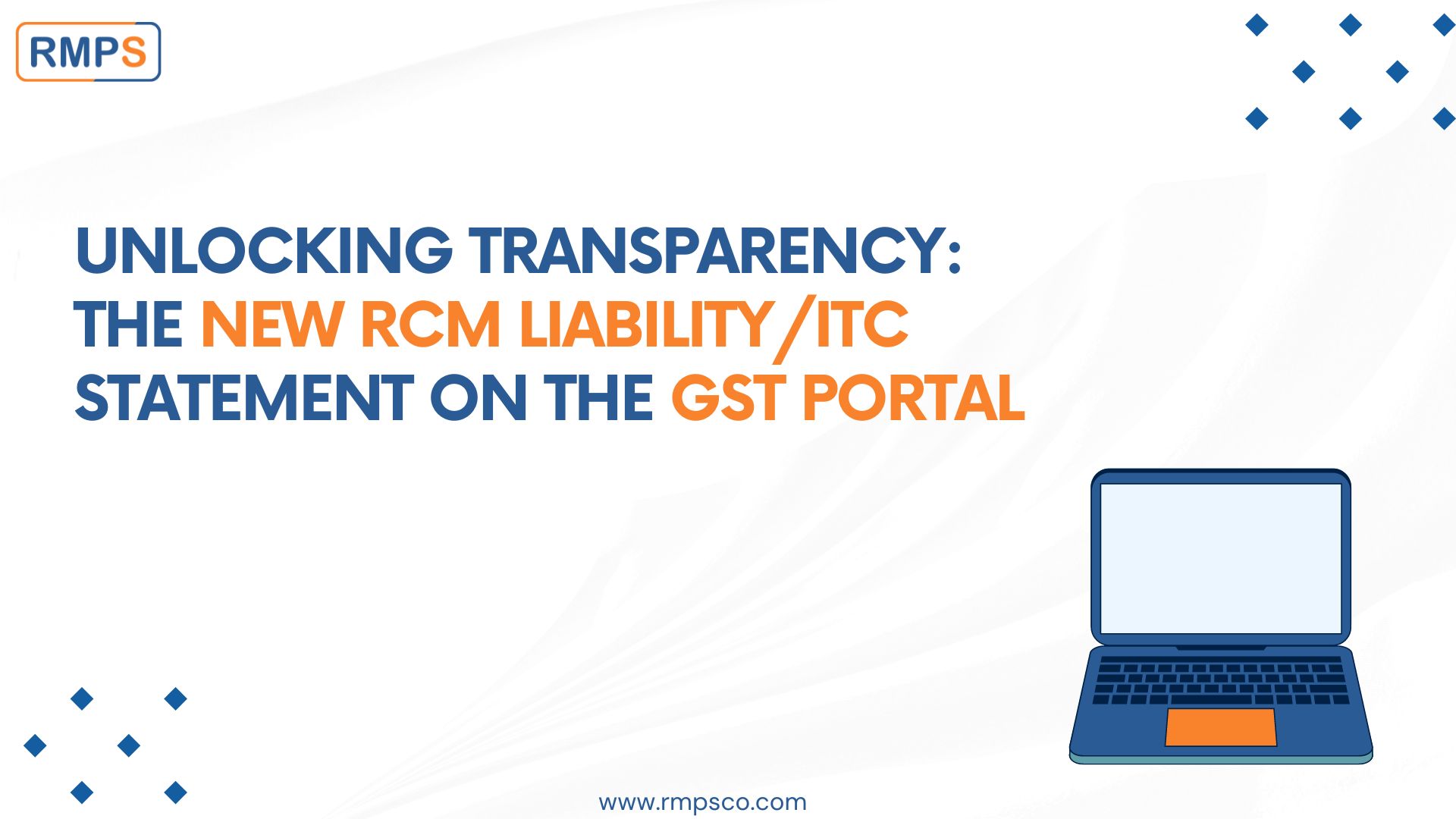
The GST landscape is evolving to better support taxpayers and enhance transparency in tax transactions. A significant addition to this framework is the new “RCM Liability/ITC Statement” on the GST Portal. Designed to help taxpayers report Reverse Charge Mechanism (RCM) transactions more accurately, this statement bridges the gap between RCM liabilities and corresponding Input Tax Credit (ITC) claims. Starting from August 2024 for monthly filers and the July-September 2024 quarter for quarterly filers, this statement aims to simplify and streamline RCM reporting.
What is the RCM Liability/ITC Statement?
The RCM Liability/ITC Statement is a comprehensive tool that taxpayers can now access on the GST Portal. It captures the RCM liability reported in Table 3.1(d) of GSTR-3B and the corresponding ITC claimed in Table 4A(2) and 4A(3) for a given return period. This tool provides a clear and transparent record of RCM transactions, reducing discrepancies and ensuring all RCM-related claims and liabilities align correctly.
How to Access the RCM Liability/ITC Statement
To access this new statement, follow these steps on the GST Portal:
Go to: Services >> Ledger >> RCM Liability/ITC Statement
Reporting the Opening Balance in the RCM ITC Statement
When reporting the opening balance for RCM ITC, you should consider a few scenarios. Here’s how to do it:
Navigation:
Login >> Report RCM ITC Opening Balance
Services >> Ledger >> RCM Liability/ITC Statement >> Report RCM ITC Opening Balance
- Excess Paid RCM Liability (ITC Not Claimed): If you have paid excess RCM liabilities in Table 3.1(d) of GSTR-3B but haven’t claimed the corresponding ITC in Table 4A(2) or 4A(3), report a positive value for the excess paid liability as RCM ITC in the opening balance.
- Excess Claimed ITC (RCM Liability Not Paid): If you have claimed excess RCM ITC in Table 4A(2) or 4A(3) of GSTR-3B without paying the corresponding liability in Table 3.1(d), report a negative value for the excess claimed ITC as the opening balance in the RCM Statement.
- Reclaiming Reversed RCM ITC: If you need to reclaim RCM ITC that was reversed in previous tax periods via Table 4B(2) of GSTR-3B, reclaim it in Table 4A(5). Keep in mind that this ITC cannot be reclaimed through Tables 4A(2) and 4A(3). Reversals do not need to be reported as opening balances.
Key Deadlines to Remember
To stay compliant, mark these important dates:
- Monthly Filers:
Report the opening balance considering RCM ITC up to the July 2024 return period. - Quarterly Filers:
Report the opening balance up to Q1 of FY 2024-25, considering RCM ITC until the April-June 2024 return period. - Deadline to Declare Opening Balance:
Declare the opening balance by October 31, 2024. - Amendments in Opening Balance:
If you make any errors while declaring the opening balance, you have until November 30, 2024, to rectify them. You will have three opportunities to make these corrections. After November 30, 2024, the amendment facility will be discontinued.
Conclusion
The RCM Liability/ITC Statement is a major step toward simplifying RCM transaction reporting. It offers a clear and structured approach to managing RCM liabilities and ITC claims, helping taxpayers avoid errors and ensuring compliance. By understanding the new process and adhering to the deadlines, you can ensure a smooth GST filing experience.
LinkedIn Link : RMPS Profile
This article is only a knowledge-sharing initiative and is based on the Relevant Provisions as applicable and as per the information existing at the time of the preparation. In no event, RMPS & Co. or the Author or any other persons be liable for any direct and indirect result from this Article or any inadvertent omission of the provisions, update, etc if any.
Published on: August 27, 2024
